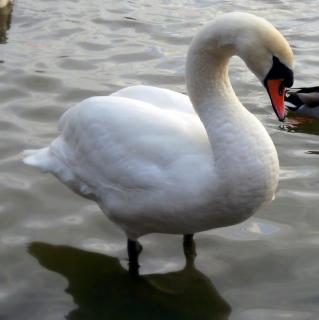Psychologist Carl Jung discovered that everyone has 8 functions, and these functions are displayed differently in each individual. Each personality type has a dominant function (our strongest and most natural function), and an auxiliary function (our second strongest function that supports our dominant function). The 3rd (tertiary) and 4th (inferior) functions are developed later in life, and represent areas where we are challenged.
The 8 Cognitive functions are very important to understand when learning about the 16 different personality types. Although it seems that the only difference between two different personality types can be just one letter, this one letter can completely change the order of a person's dominant functions and how they are presented in their personality.
Se: Extraverted Sensing Si: Introverted Sensing
Ne: Extraverted iNtuiting Ni: Introverted iNtuiting
Te: Extraverted Thinking Ti: Introverted Thinking
Fe: Extraverted Feeling Fi: Introverted Feeling
Cognitive Function Descriptions
Se: Extraverted Sensing
Extraverted Sensing is the strong awareness of the physical world. We enjoy the thrill of actions and impulses in the present moment. We act on our experiences immediately. We experience the sights, sounds and smells of the world around us to our fullest extent.
Si: Introverted Sensing
Introverted Sensing is the storing of data and then the comparison of that data with other experiences. For example, when we see a movie that reminds us of another similar movie. Or when we see a person that reminds us of someone else. We also use past experiences to learn how to handle similar current situations. There is great attention to detail with Introverted Sensing.
Ne: Extraverted iNtuiting
Extraverted Intuiting involves seeing all possibilites of a subject and believing that each one has a possibility of being true. We can juggle many ideas at once, and find that this cognitive function makes it easy and enjoyable to brainstorm. Extraverted Intuiting involves coming to conclusions about ideas from one major idea. The idea implies relationships and smaller ideas.
Ni: Introverted iNtuiting
This function allows a person to gain a sense about the future by processing data through impressions and meanings. We find ourselves discovering how the future will be by signs, trends, and patterns. We will find relationships between many ideas, and find ideas similar to those ideas in order to look for a main idea that is made up of these smaller ideas. These ideas and similar ideas come to one main idea that will turn out to be true and give the sense of an "Aha!" moment.
Te: Extraverted Thinking
Extraverted thinking helps to create order out of chaos. They organize the environment through charts, graphs, outlines, etc. It allows us to pick out what is necessary and figures out the most efficient way to complete an objective. Extraverted Thinkers love a challenge because it attests to their skills. They will almost always follow through with a project.
Ti: Introverted Thinking
Introverted Thinking finds ways to express an idea that is to the point and concise. We analyze, categorize, and evaluate to figure out whether something fits into the larger framework. We figure out the precise problem of an idea or concept and then work to fix it. We often are checking for inconsistencies in the world, and we often take things apart to understand how it works. We use models to see how things should be, and look at both sides of issues to determine inconsistencies.
Fe: Extraverted Feeling
Extraverted Feeling involves considering other peoples feelings to a great level. We often try to help everyone get along, and we may often disclose our own feelings and take on others' as our own. We like to determine what will work best for the group in order to honor and consider everyones values and feelings. We accomodate ourselves and others by deciding what is appropriate and acceptable in that setting. We often use social graces by being polite, considerate, and appropriate. We often respond to people's expressed or unexpressed wants or desires.
Fi: Introverted Feeling
Introverted Feeling acts as a filter- it often is considering the worth of something based on the truth in which it is based. We decide whether something is worth standing up for based on its truth and significance. We often have feelings of a persons essence and this helps us to determine if something is fake or true. Introverted Feeling is often expressed through actions and feelings rather than words.
This chart shows how often we use these cognitive functions depending on what type we are. The first and second are most important.
INTP = Ti > Ne > Si > Fe
ISTP = Ti > Se > Ni > Fe
ENTP = Ne > Ti > Fe > Si
ENFP = Ne > Fi > Te > Si
ISFP = Fi > Se > Ni > Te
INFP = Fi > Ne > Si > Te
INTJ = Ni > Te > Fi > Se
INFJ = Ni > Fe > Ti > Se
ESTJ = Te > Si > Ne > Fi
ENTJ = Te > Ni > Se > Fi
ESFJ = Fe > Si > Ne > Ti
ENFJ = Fe > Ni > Se > Ti
ISTJ = Si > Te > Fi > Ne
ISFJ = Si > Fe > Ti > Ne
ESTP = Se > Ti > Fe > Ni
ESFP = Se > Fi > Te > Ni



















